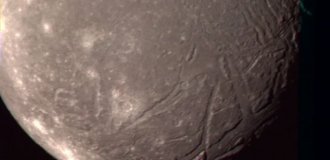February 16, 1923, a hundred years ago, Howard Carter's expedition found the stone sarcophagus of Pharaoh Tutankhamun (7 photos)
Since ancient times, the high culture of Egypt has caused enthusiastic astonishment among the peoples of the world. Scientists and philosophers of Greece came to Egypt in search for knowledge. The sick were brought to the Nile valley since the Egyptians doctors were considered the best healers of human ailments. But before Egypt - a country of stone wonders - beckoned with its incomparable monuments of art. 
Burials, like sealed pantries, preserved treasures ancient art. Tutankhamun's tomb is the only one not plundered the tomb, which came down to scientists almost in its original form, was discovered in 1922 by two Englishmen, Egyptologist Howard Carter and amateur archaeologist Lord Carnarvon. 
It is located in the Valley of the Kings, where in the 16-11 centuries BC era, tombs were built for the burial of the pharaohs - the kings of the Ancient Egypt. The valley is located on the west bank of the Nile, opposite the city of Thebes (modern Luxor). 
Her search went on for a long time. In the Valley of the Kings have long been working archaeological expeditions that seem to have unearthed everything that perhaps new discoveries were not expected. However, Carter was convinced that Tutankhamun's tomb must be around here somewhere. The scientists did not leave with the hope that, perhaps, it will be possible to find the entire burial in its entirety. 
Dr. Zahi Hawass (center) monitors the movement of the mummy pharaoh Tutankhamun from his stone sarcophagus in the Valley of the Pharaohs in Luxor, November 4, 2007
On February 16, 1923, a British expedition led by archaeologist Howard Carter found the main treasure of the pyramid: a stone pharaoh's sarcophagus. When the sarcophagus was opened in February, inside was golden coffin with his mummy. The sarcophagus was gold and contained over 100 kg pure gold, and the body of the pharaoh located there was mummified. 
Lunch at the tomb of Ramses XI. Carter with professors from Oxford
The room where the sarcophagus was located was filled with such many precious items that it took whole five years. 
Modeled image of Pharaoh Tutankhamun created by French team based on facial reconstructions made with computer scan of the pharaoh's mummy. May 10, 2005
The sarcophagus with the mummy of Tutankhamun was left in his tomb in valley of the kings. All the treasures found there are now kept in Cairo. museum. 





























